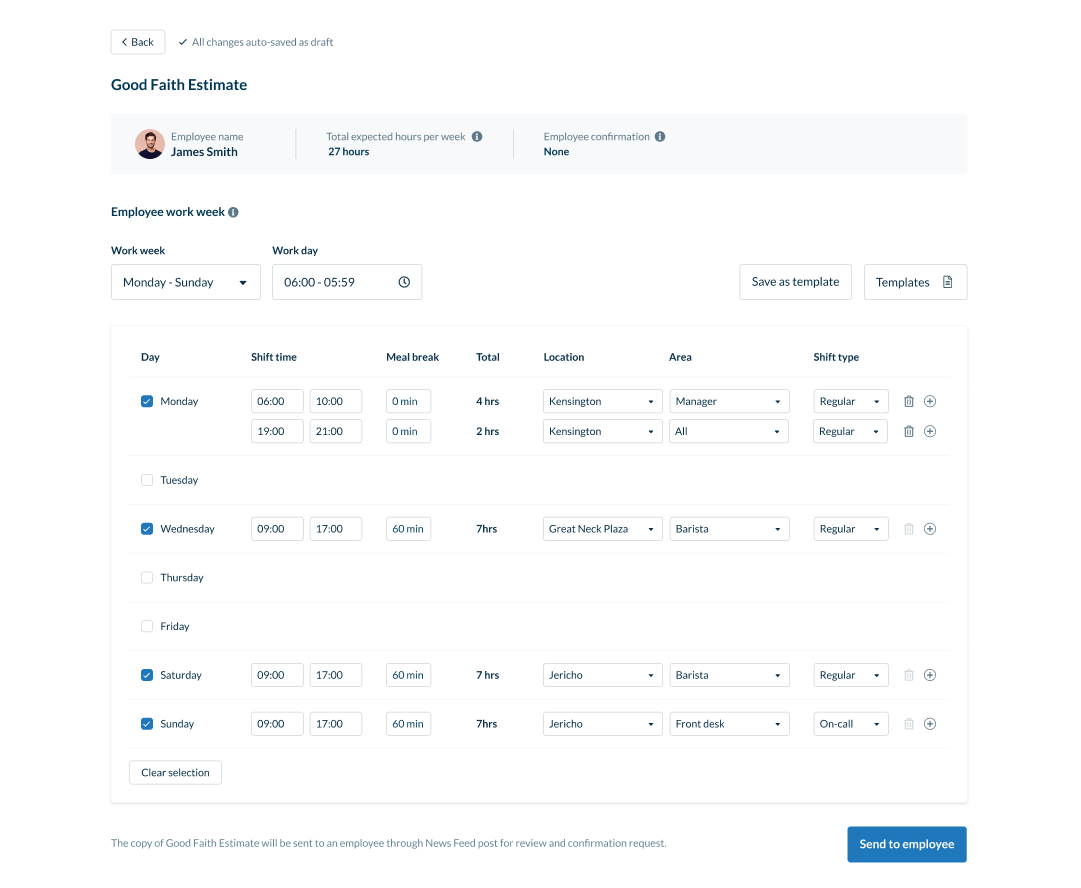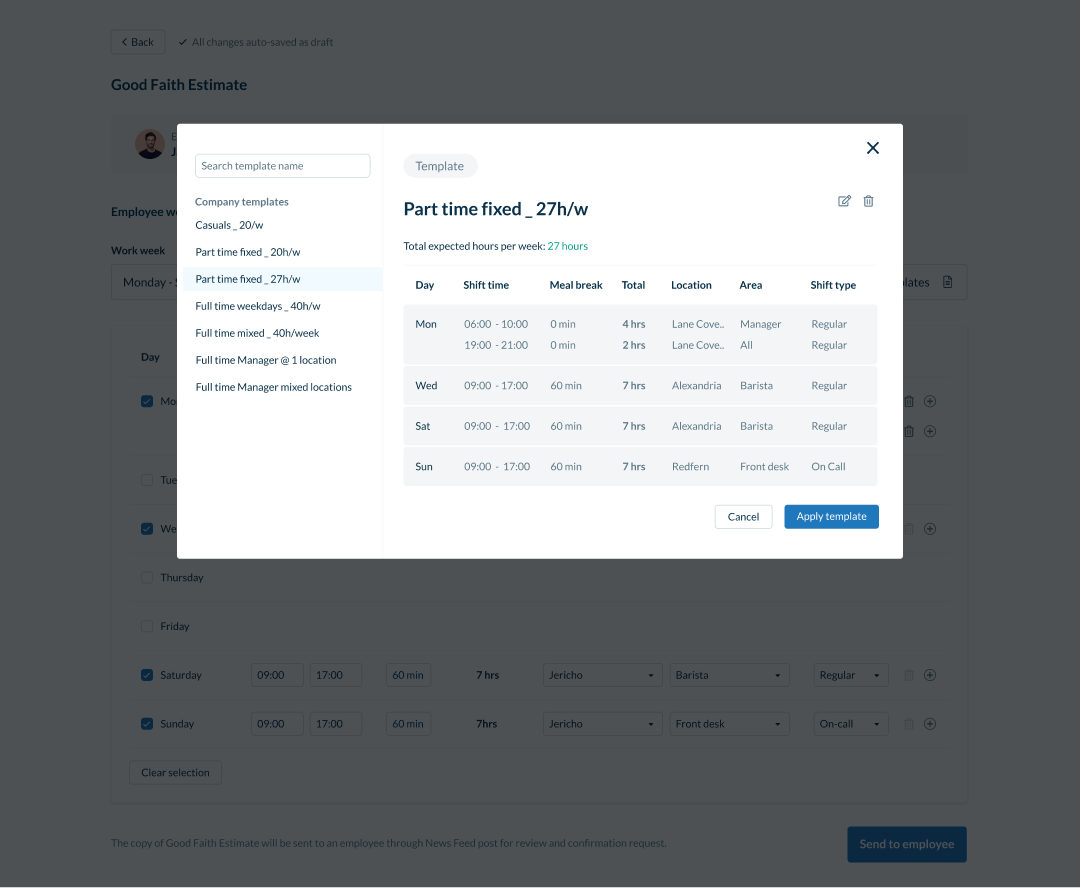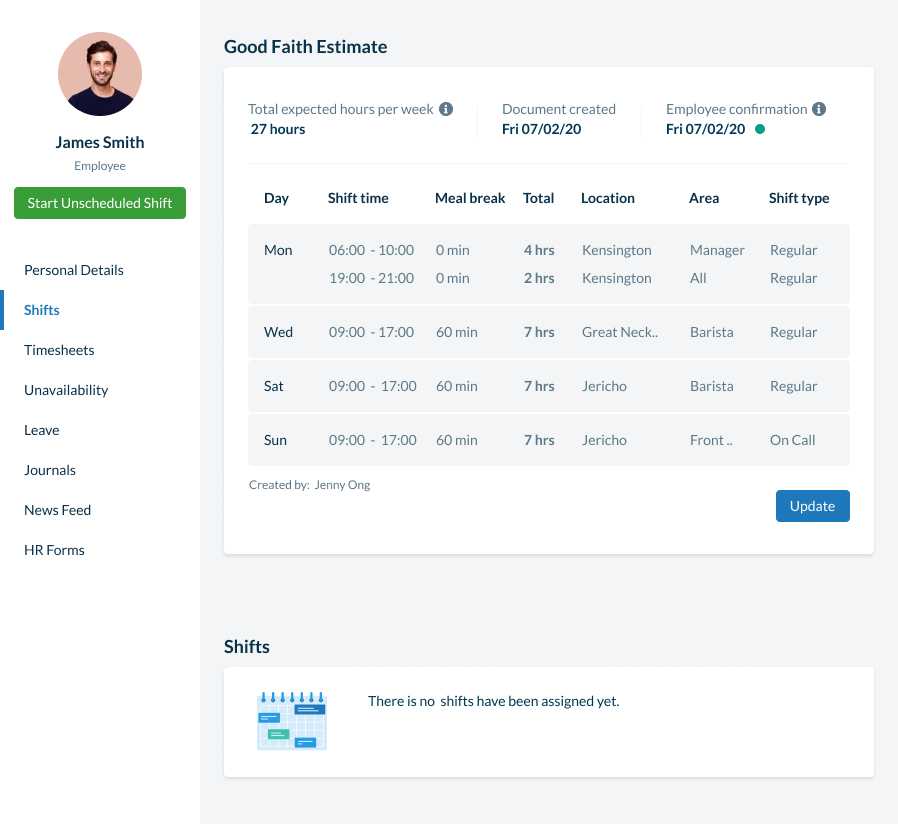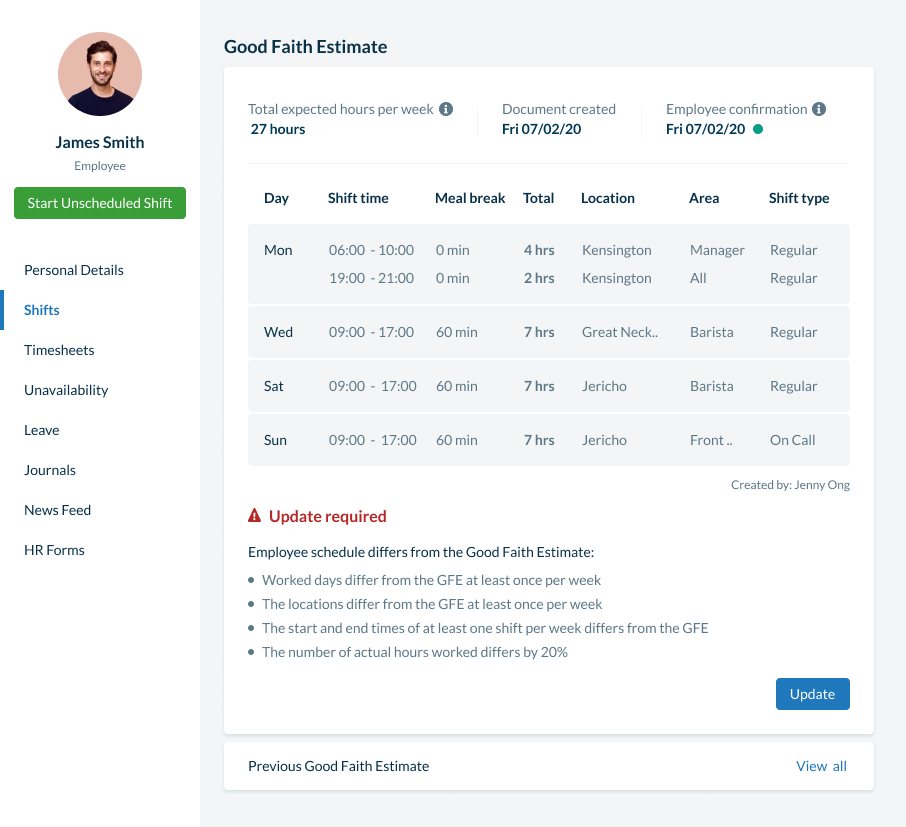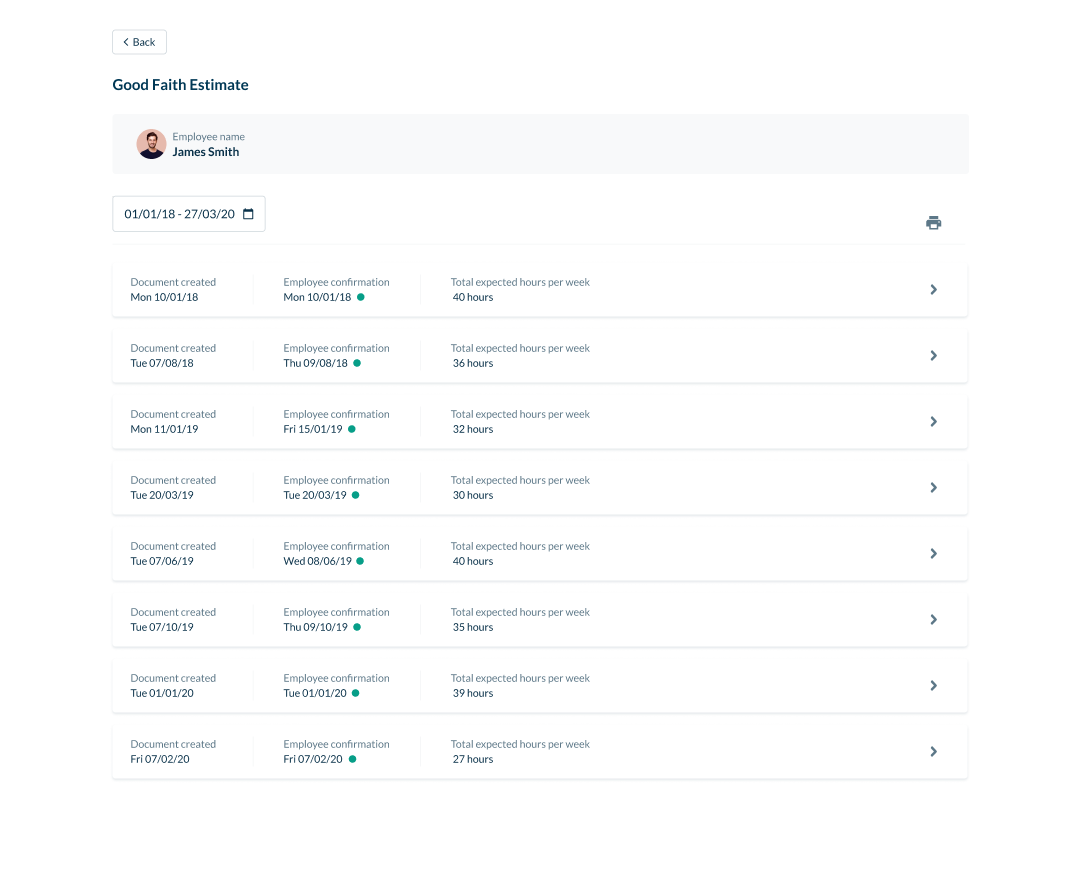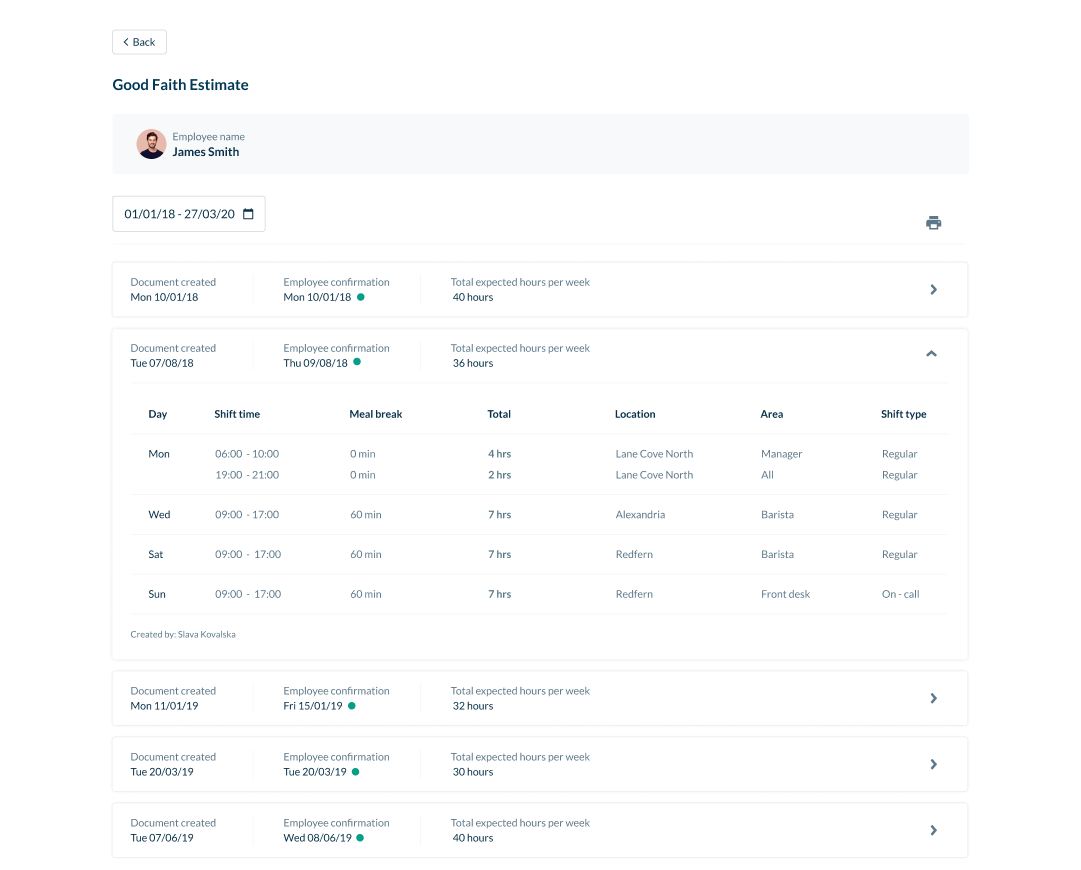New York Fairworkweek
New York Fairworkweek legislation has been introduced to protect part-time workers in retail and foodservice industries. The law requires business owners to share employee schedules in advance and compensate their employees if schedules change without proper notice.
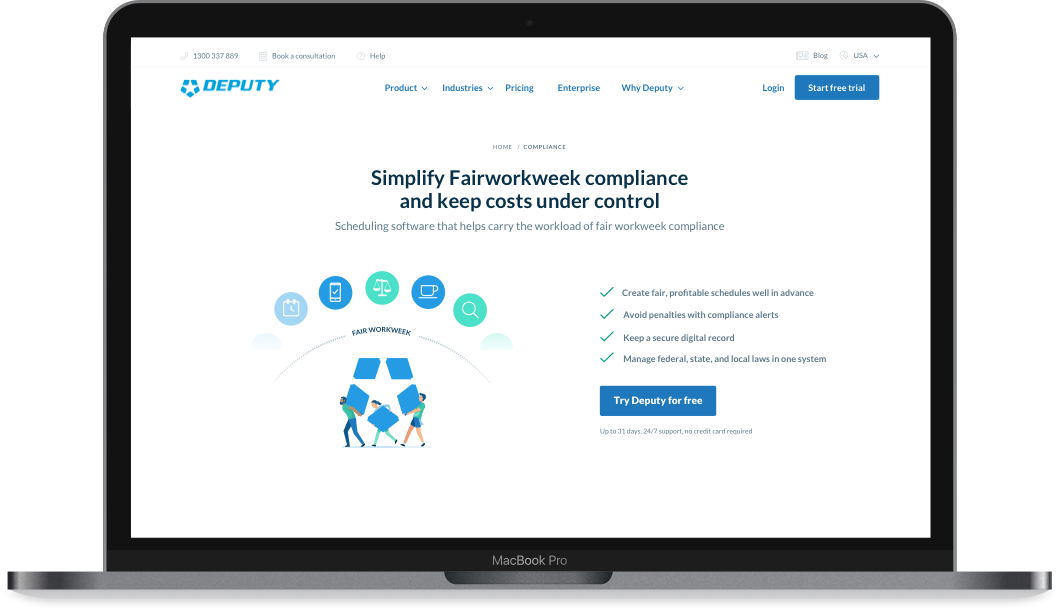
Challenge
The current company system did not provide substantial visibility and full assistance to customers in the USA with Fairworkweek.
Customers are required to be informed and guided about what’s going on in the system through appropriate recommendations within a reasonable time and place.
My role
As the design lead in the Compliance team, I was responsible for the following:
- Research and understand current customer’s understanding and experience on Fairworkweek in New York city
- Learn about customer expectations and requirements on NY Fairworkweek
- Present research findings
- Work closely with PM, Sales and Legal teams on defining a roadmap, its phases and jobs-to-be-done
- User experience and interface design
Outcome
- Clear visibility and storage of Good Faith Estimate
- Automated workflows to issue and re-issue of Good Faith Estimate
- Ongoing recommendations with schedule updates
- Bulk employee scheduling
- Easy access to records
What did the process look like?
- Stakeholder discussions
- Competitor analysis
- User interviews
- Internal interviews
- Experience map
- User flows
- Feedback synthesis
- Key findings
- Recommendations
- Play back
- Next steps
- Wireframes
- Stakeholder feedback
- User Interface
- User feedback
- Internal feedback
- QA
- Cusromer feedback
Discovery
Our first step in understanding the landscape was to review the current system state and learn about the USA Fireworkweek legal requirements to identify the main gaps.
Main Fairworkweek laws business requirements:
- Provide employee schedules in advance and take employee’s scheduling requests into consideration
- Provide all employees with Good Faith Estimate of the hours they can expect to work
- Pay employees a higher rate if their work schedules are changed or their hours are reduced
- Ensure easy access to employee schedules
- Scheduling employee shifts in accordance with employee ‘rest periods’
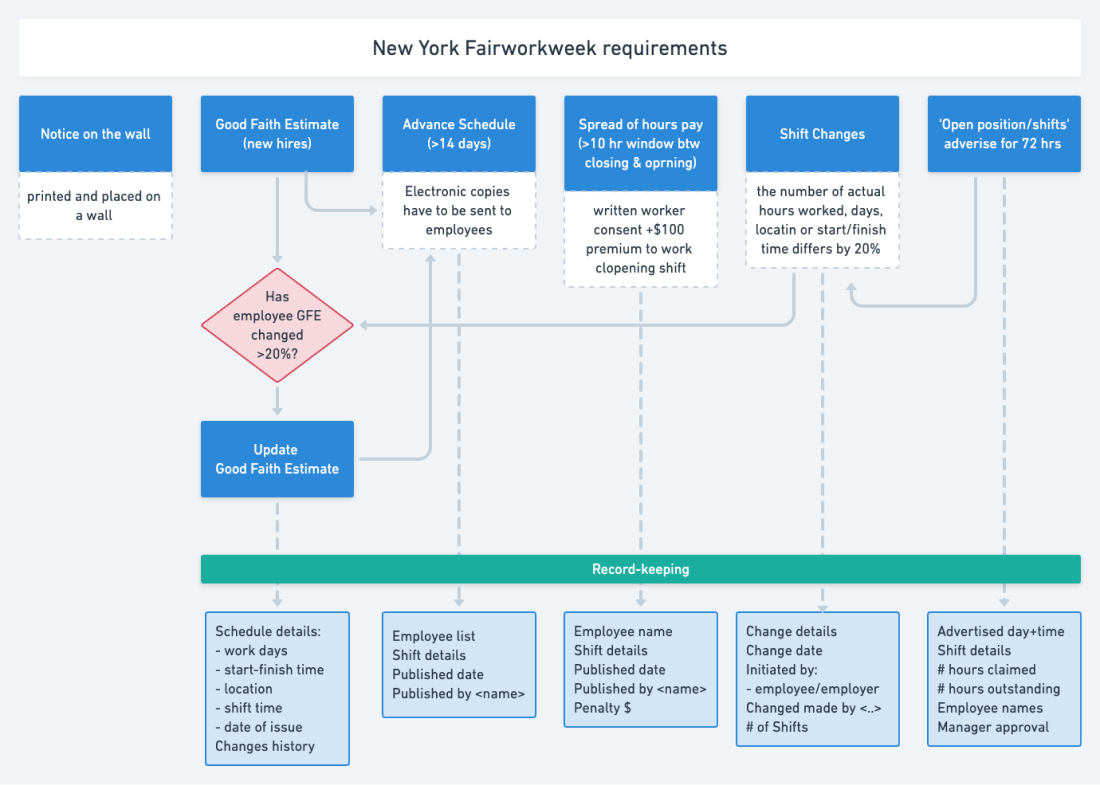
Research
Who did we talk to? | What did we want to learn? |
|---|---|
Internal
| General understanding of customer’s expectations and requests:
|
ExternalNew and existing customers based in the USA who are impacted by NY Fairworkweek:
| General understanding of customer’s current experience, knowledge and pain points on the following:
|
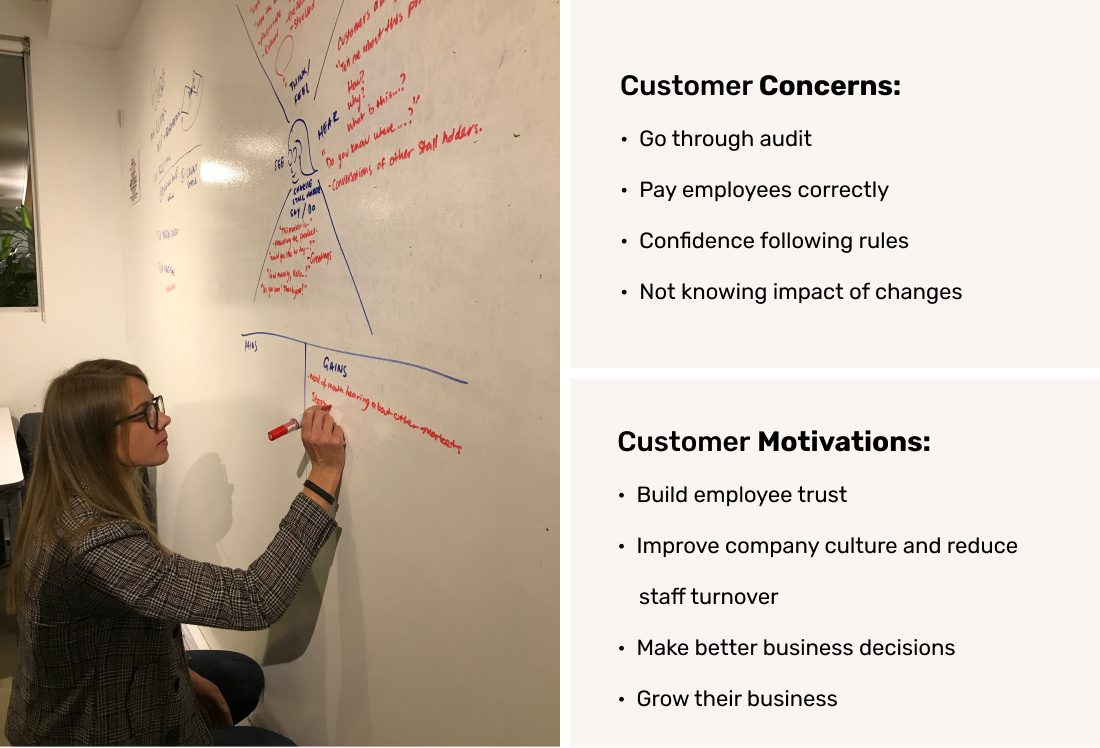
Competitor analysis
From internal interviews with our Sales team based in the USA I identified a few direct and indirect competitors and did analysis of their products to understand how they position themselves and what they do well on the Compliance Fairworkweek side.
Key Research findings
There were a number of repeated patterns:
- New and existing customers require guidance on how to follow FWW rules and stay compliant
- Automated workflows required to reduce manual entry, increase accuracy and save time
- When users make schedule related changes, they expect updates and recommendations to be aware of the impact
- Easy access and visibility of records to be audit-ready
Planning
Since the Good Faith Estimate is the first and main component of the Fairworkweek it bacame our first priority on the roadmap. I mapped out step by step flows for both businesses which require to onboard their new and existing employees with Good Faith Estimate (GFE) and later, issue an updated GFE if it’s changed. The flows helped me and the team to understand the bigger picture and break down work into phases.

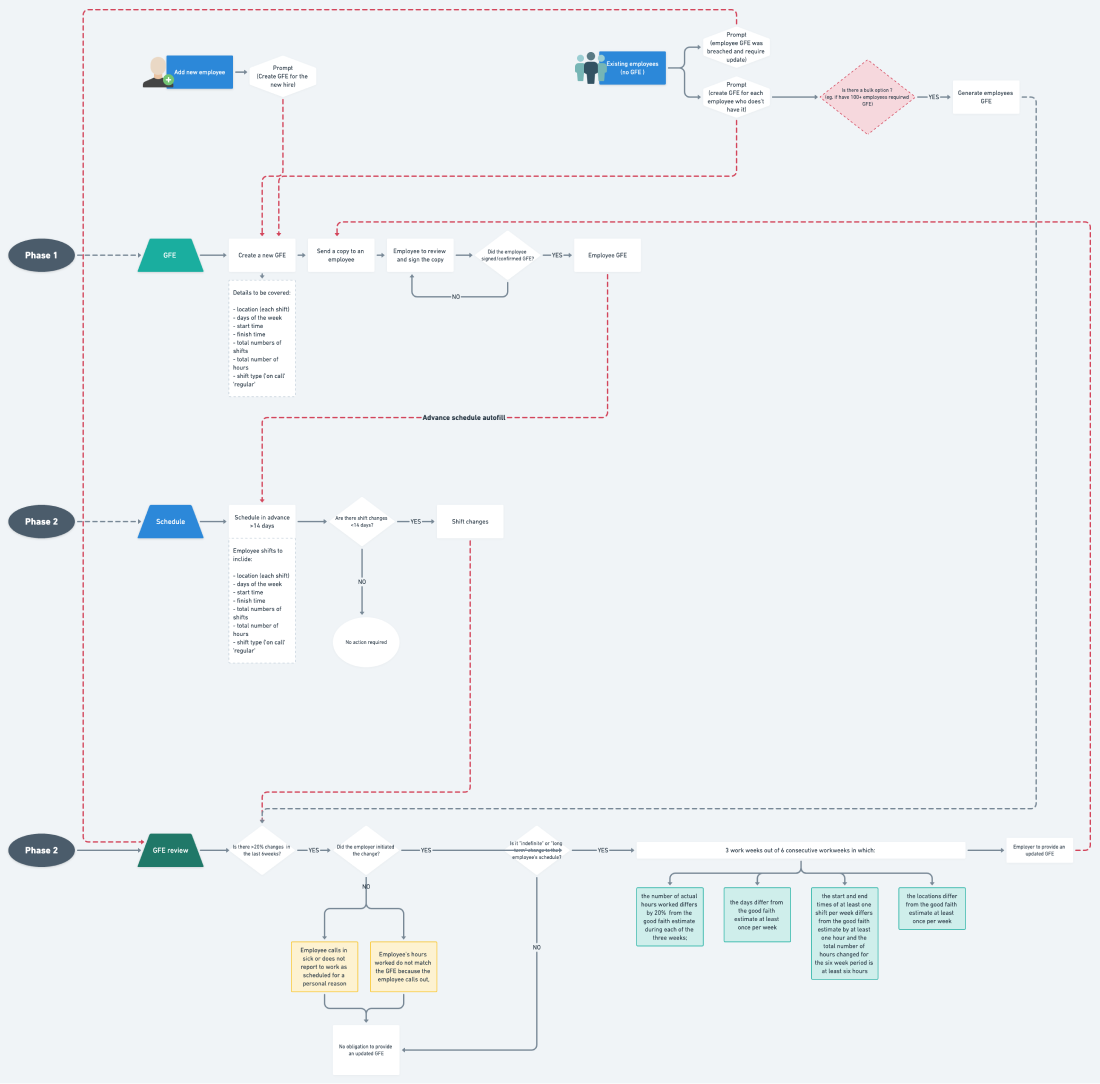
How Might We
How Might We format was a perfect design thinking exercise to help us turn our customer problems into opportunities.
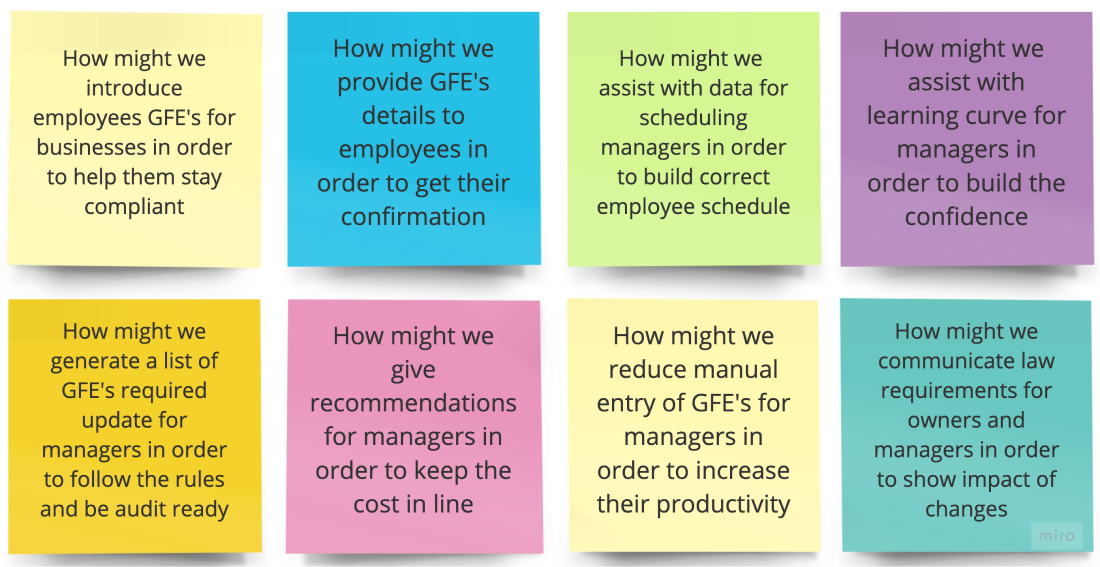
User Interface
Based on customer’s feedback and legal reviews, I designed the following Good Faith Estimate screens:
- Prompt for Onboarding Managers to create GFE for new hires
- New GFE and options to save or use later as templates
- Prompt to update employee’s GFE when it changed by 20%
- Easy access and GFE history overview for admin or audit purposes
Impact
- 1 step closer to enable better compliance experience
- Ongoing visibility of schedule updates (for both employer and employees)
- Reduced manual entry when scheduling employees (for business)
- Entry and storage of Good Faith Estimate
- Seamless auditability
Up next
This is a current project, so stay tuned for more Fairworkweek design solutions.

